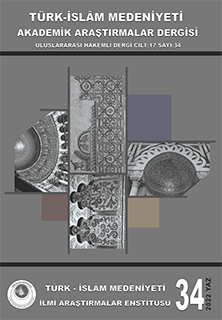An Analysis of the Ancestry of Jesus According to the Gospels
Keywords:
Mary, Ancestry, David, Messiah, Prophet, HumanAbstract
In Christianity, one of the issues that is difficult to explain is Jesus’ ancestry. In Matthew, it can be observed that the family tree of Jesus goes back to David. (Matthew, 1/17) In Luke, it can be seen that the Archangel Gabriel came to Mary Magdelene and said: “You will conceive and give birth to a son, and you are to call him Jesus. He will be great and will be called the Son of the Most High. The Lord God will give him the throne of his father David”. (Luke, 1/31-32) We can note here the very important paradox of Christian theology: on the one hand, we see Jesus who was born of Mary, who herself became pregnant through God’s will and might; on the other hand, we see that despite being born without a father, he was connected with a specific lineage. One argument for this is that the gospel tried to link Jesus to a certain lineage in order to prove that he was the long awaited Messiah. The reason for this is that in the Judeo-Christian tradition, the long awaited Messiah will be a descendant of David. To show that Jesus, who was born without a father, was indeed the Messiah, the Gospels pointed to fourty-two ancestral links between Jesus and David. According to Christian theology, Jesus does not have a father. Mary had conceived due to the will and might of God through the Archangel Gabriel and thus Jesus was born. Therefore, Jesus’ birth is a divine miracle. On the one hand, accepting Jesus as the son of God, and on the other hand, saying that he has an ancestry that can be traced back to David, puts Christian theology in a bind, as these ideas are mutually exclusive. The only way for Christianity to get out of this paradox is to accept Jesus as a prophet and a submissive servant of God, and that Mary gave birth to him without a father being involved as it was due to the will and might of God that he came to be.
References
Kitab-ı Mukaddes, İst. 1958.
F. COYRÉ, 1927, Precis de Patrologie, Paris.
WELTER, G., 1950, Histoire des Sectes Chrétiennes, Paris.
PROTİN, S., La Marialagie Augustinienne, Dans, Rev. Aug, t.I
Actes du Concile Vatican II, 1966, Textes integreaux, Paris.
MARTIN, J., 1907-1908, Saint Epiphane dans Annales de Philosophie Chrétienn, Paris.
VOUAUX, L., 1922; Les Actes de Pierre, Paris.
DVORNİK, F., Konsiller Tarihi 1990, Türkçe Çev. M. Aydın, Ankara.
AYDIN, M., 2011, Din Fenomeni, Konya.
AYDIN, M., 2005, Ansiklopedik Dinler Sözlüğü, Konya.
AYDIN, M., 1998, Müslümanların Hıristiyanlığa Yazdığı Reddiyeler ve Tartışma Konuları, Diyanet Vakfı Yayınları, Ankara.
Downloads
Published
How to Cite
Issue
Section
License

This work is licensed under a Creative Commons Attribution-NonCommercial 4.0 International License.







